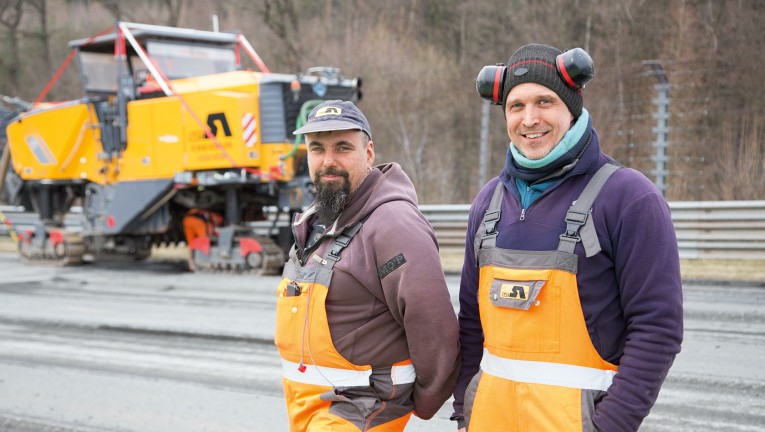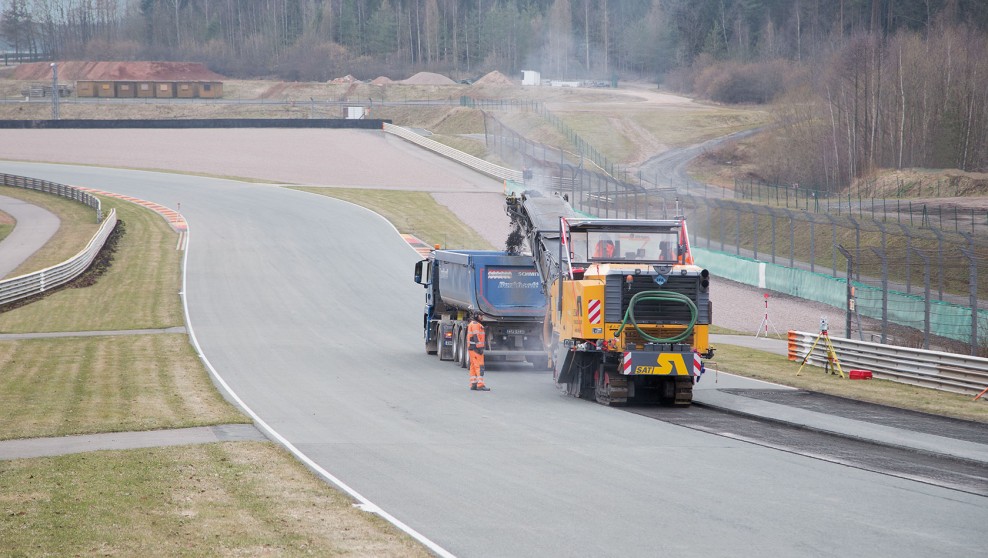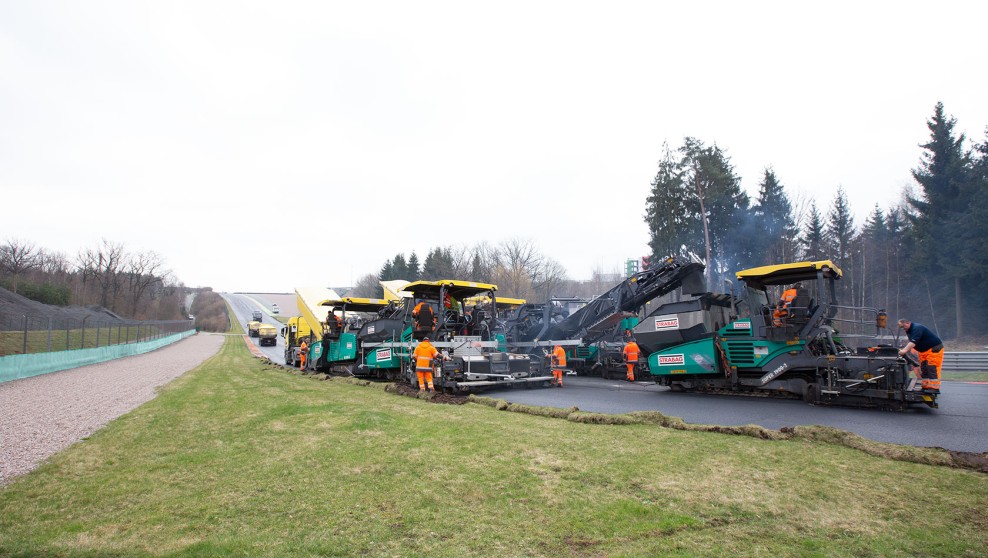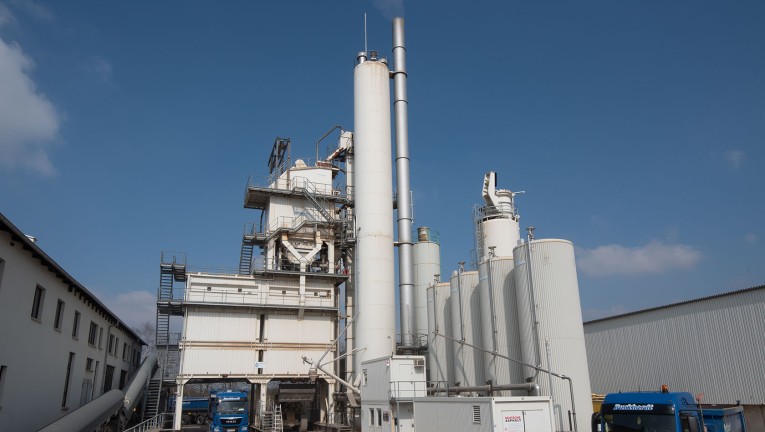A fresh grip at 90
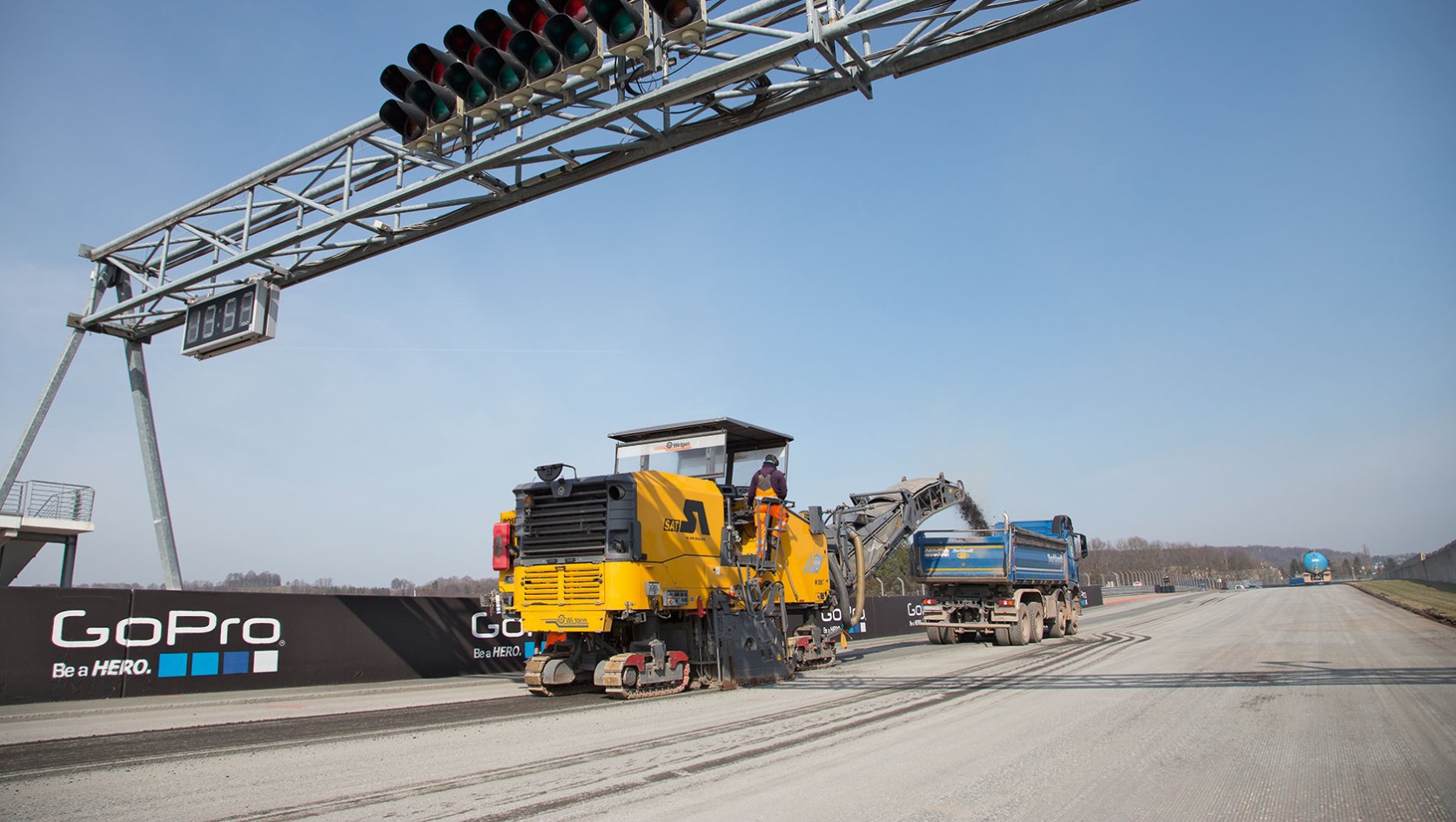

WIRTGEN W 200 and W 220 cold milling machines play a key role, laying the ground for thepavement rehabilitation and reprofiling of the legendary Sachsenring race track.
Millimetre accuracy is essential when every thousandth of a second counts: when it was time to rehabilitate the Sachsenring race track, one of the most famous circuits in the east of Germany, the client took the opportunity to reprofile the track, too. The plan was to change the geometry of the track on selected bends to ensure that the regulations of the motorcycle racing organization Fédération de Motocyclisme International are also complied with in the future. This was just the job for the WIRTGEN W 200 and W 220 large milling machines. Together with VÖGELE pavers and a BENNINGHOVEN asphalt mixing plant, the construction teams of Strabag, the contractor responsible for the project and SAT, the milling service provider, were able to rehabilitate the legendary race track in the Ore Mountains quickly and precisely.
On reprofiling jobs, precision is essential for quality. The WIRTGEN milling machines reliably delivered this.
Rolf Lohberger and Marco Seidel, Milling Machine Operators SAT Straßensanierung GmbH
To achieve optimum milling results, WIRTGEN cold milling machines offer state-ofthe art features. These include one of WIRTGEN‘s core technologies – levelling. When the surface course is removed, the LEVEL PRO levelling system continually compares the actual milling depth with the preset target milling depth. LEVEL PRO can work with different sensors – cable, hydraulic cylinder, sonic and slope sensors or laser and sonic ski sensors as well as multiplex systems – and can be extended as required. 3D levelling is also possible with installed interfaces that are compatible with 3D systems from common manufacturers.
Maximum precision was a must during milling, as cold milling machines have a considerable influence on the quality of road rehabilitation works. This is especially true for race tracks, as the demands to be met during rehabilitation by far exceed those of normal road paving jobs. It was necessary to mill off the existing asphalt pavement to a depth of 8cm. The call for tender specified 3D levelling for the reprofiling of several bends. The milling service provider used the digital terrain model previously created by the client to feed the processed data for levelling into the cold milling machines via an interface. “This means that it’s no longer necessary to scan references on the ground. Instead, the machines receive their milling depth information via a total station that is set up next to the pavement surface which is to be milled. It automatically follows the cold milling machine with a range of up to 100m,” explains Gerald Kluge, university-qualified engineer and Head of Milling Division at SAT. To ensure that the machine receives a continuous reference signal during 3D milling, the total station must be relocated roughly every 100m and recalibrated at the new position. Two total stations were used at the Sachsenring race track, each alternately serving as a signal transmitter for the milling machine.
Reprofiling with 3D levelling. Before milling work was started, surveyors created a digital terrain model of the new track profile. The data were then sent via an interface to the WIRTGEN milling machine and subsequently served as a target milling depth for levelling.
A tight schedule meant that the rehabilitation work had to be completed as quickly as possible. Both WIRTGEN W 200 and W 220 high-performance milling machines not only met expectations with regard to the milling performance, but also with functions such as automatic machine alignment by means of PTS (Parallel To Surface). During parallel alignment of the large milling machine with the pavement surface, the automatic function takes care of all the tasks the operator would otherwise have to carry out himself. Time-consuming corrections are no longer necessary. The WIRTGEN LEVEL PRO levelling system should be mentioned in this context; it processed the digital data with great precision, delivering an even milled surface. “In the end, the asphalt of the entire track was removed extremely efficiently and accurately with only 2 milling machines,” commented Uwe Walter, Head of the WIRTGEN GROUP subsidiary in Zwickau, which provided support during the project.
In combination with the 3D levelling system, the WIRTGEN large milling machines fulfilled the high evenness requirements of below 6mm, measured across a width of 4m. In addition, the grade of the milled surface was not permitted to deviate from the specifications of the digital terrain model by 8mm at any point. This requirement was also met, as evidenced by control measurements made during milling and the verification with a rolling straight edge. The 2 large milling machines removed the surface and binder courses on the entire race track with an area of just over 50,000m² in only four days. The average advance rate of the machine was 7m/min. The cold milling machines were equipped with a milling drum featuring a tool spacing of LA 8 – another client specification to ensure optimum interlocking of the new a phalt binder course with the milled surface.
In addition to the evenness, the texture, i.e. the geometric form of the surface, is a decisive property of the milled surface. The following parameters have a key impact on the texture:
Following on from the precise preliminary work of the WIRTGEN cold milling machines, 5 VÖGELE machines then took care of the highquality asphalt paving. Strabag used 3 SUPER 1900-2 pavers with AB 500 TP1 Extending Screeds and two MT 3000-2i PowerFeeders for the job. The asphalt was supplied by a BENNINGHOVEN TBA 3000 transportable asphalt mixing plant operated by Deutsche Asphalt GmbH.
The Vögele pavers were easily able to keep to the specified minimum speed even on inclines of up to 10%.
Transportation asphalt mixing plant
| Nominal mixing capacity | 160 - 320 t/h |
| Hot bin section | 60 - 150 t |
| Mixed material loading silo | 0 - 517 t |
